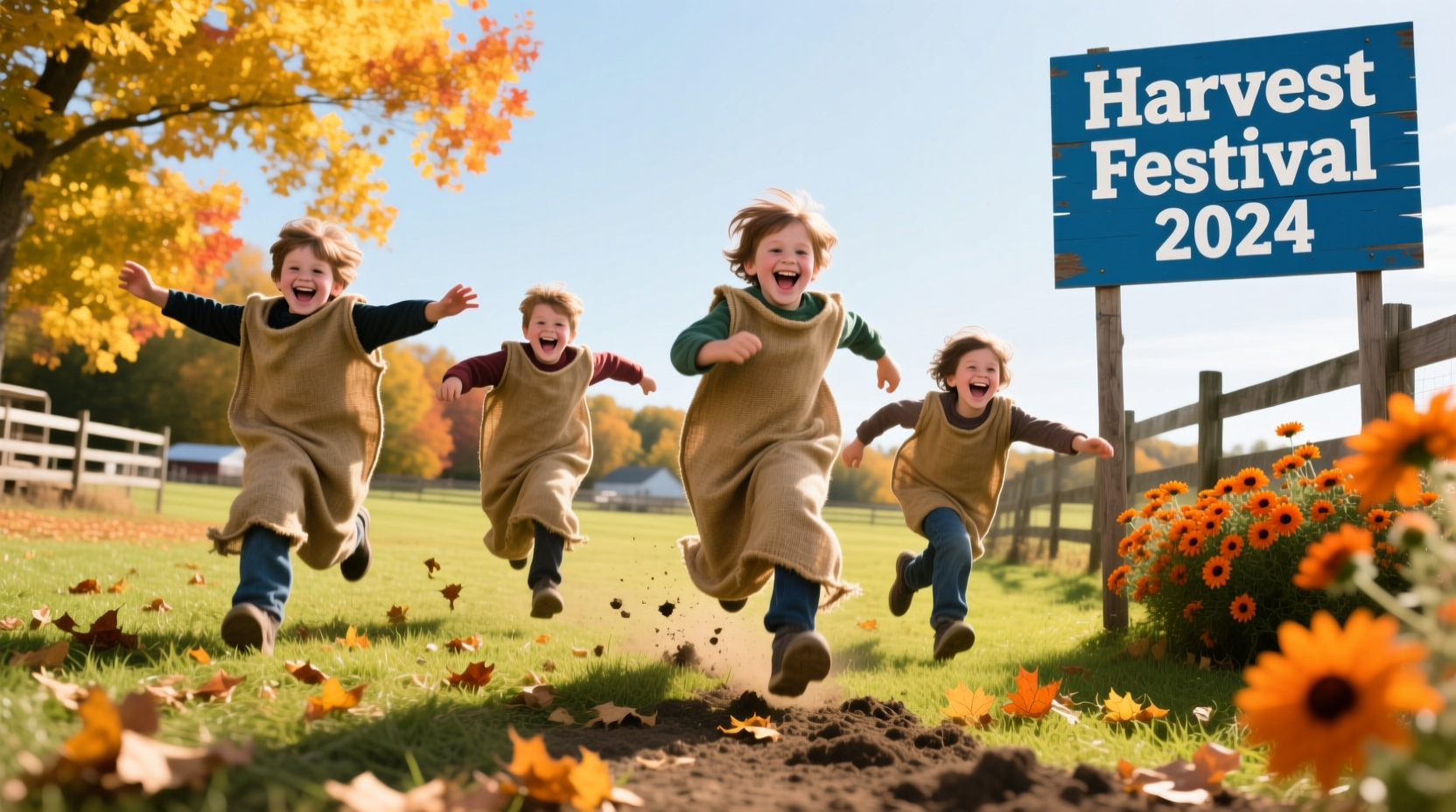Why Potato Sack Races Stand the Test of Time
At first glance, a potato sack race seems deceptively simple—just hop in a sack and race. But this timeless activity has endured for good reason. Unlike digital entertainment, sack races create genuine laughter, friendly competition, and physical engagement that builds community. Whether at school field days, family reunions, or community festivals, the sight of people hopping awkwardly yet determinedly never fails to draw cheers and smiles.

From Farm Work to Family Fun: The Evolution of Sack Races
Potato sack races didn't start as games—they evolved from practical agricultural work. In the late 19th century, farmers commonly used burlap sacks to transport potatoes and other crops. When work was done, farmhands would sometimes challenge each other to hop races using empty sacks, turning labor into lighthearted competition.
| Era | Development | Significance |
|---|---|---|
| 1880s-1890s | Informal races among farm workers | Transition from work tool to recreational activity |
| Early 1900s | Adoption by schools and community events | Formalization of basic rules and standard distances |
| Mid-20th century | Inclusion in Olympic-style field days | Establishment as a staple of American school culture |
| 21st century | Modern adaptations and themed variations | Global spread with cultural adaptations worldwide |
According to historical records from the Library of Congress, sack races appeared in American physical education curricula by 1910 as schools recognized their value for developing balance, coordination, and sportsmanship. The National Association for Sport and Physical Education continues to recommend sack races as developmentally appropriate activities for children ages 5-12.
Your Step-by-Step Guide to Organizing a Perfect Potato Sack Race
Essential Equipment Checklist
- Burlap sacks (one per racer) - standard size 36" x 18"
- Measuring tape for course setup
- Cones or markers for start/finish lines
- Soft surface area (grass preferred over concrete)
- First aid kit nearby for safety
Safety First: Critical Guidelines You Must Follow
The American Academy of Pediatrics emphasizes that proper safety measures transform sack races from potentially hazardous to completely safe activities. Follow these evidence-based guidelines:
- Maintain at least 3 feet of space between racers to prevent collisions
- Use soft surfaces like grass—never concrete or asphalt
- Limit race distance based on age: 15-25 feet for ages 5-7, 25-50 feet for ages 8-12
- Always have adult supervision with clear sightlines to all participants
- Teach proper falling technique: tuck and roll to avoid wrist injuries
Setting Up the Perfect Course
Course design significantly impacts both safety and enjoyment. For optimal results:
- Choose a flat, even surface free of rocks and holes
- Mark start line with spray paint or tape for visibility
- Create individual lanes with cones spaced 3 feet apart
- Ensure finish line is clearly visible with a banner or arch
- Provide ample space beyond finish line for safe deceleration
Official Rules and Popular Variations
| Standard Rules | Common Variations | Best For |
|---|---|---|
| Both feet must remain in sack at all times | "Giant Sack" team version (4-6 people) | Teen/adult events |
| No holding sack with hands while moving | Obstacle course version | Experienced players |
| Start behind line, wait for signal | "Potato Pass" relay race | School field days |
| First to cross finish line wins | "Reverse Sack Race" (backwards) | Advanced players |
Age-Appropriate Modifications
Successful sack races adapt to participants' developmental stages. The National Association for Sport and Physical Education recommends these adjustments:
- Ages 4-6: Use shorter sacks that reach only to knees, 10-15 foot distance, allow one hand inside sack for balance
- Ages 7-9: Standard sack height, 20-30 foot distance, no hands allowed while moving
- Ages 10-12: Full-length sacks, 30-50 foot distance, optional relay format
- Teens/Adults: Competitive distances up to 100 feet, team relays, obstacle courses
Creative Twists to Refresh This Classic Game
While traditional sack races remain popular, these innovative variations keep the activity fresh and engaging for repeat events:
The Potato Pass Relay
Teams of 4-6 compete in a relay format where each member hops to a midway point, passes a small potato to the next teammate, then returns. The twist? The potato must stay in the sack during the entire handoff.
Themed Sack Races
Add cultural or seasonal themes to increase engagement:
- Harvest Festival: Decorate sacks with autumn colors, race toward a pumpkin finish line
- Olympic Theme: Create country-themed teams with decorated sacks and medal ceremonies
- Charity Events: Raise funds per lap completed, with sponsors donating per foot raced
Inclusive Adaptations
Ensure everyone can participate regardless of ability:
- Use shorter hops with frequent rest stops for mobility-limited participants
- Provide adaptive sacks with handles for better grip
- Create "buddy systems" where participants race in pairs for support
- Offer alternative movement styles (walking instead of hopping) while maintaining the sack
Why This Simple Game Still Matters
In our digital age, potato sack races offer something increasingly rare: unscripted physical play that creates genuine human connection. Unlike screen-based entertainment, sack races require participants to be fully present, developing spatial awareness, balance, and resilience when they inevitably stumble. The shared laughter when someone tumbles creates authentic social bonds that strengthen communities.
Research published in the Journal of Physical Activity and Health shows that traditional games like sack races develop proprioception (body awareness in space) more effectively than structured sports for young children. The unpredictable nature of hopping in a sack forces constant micro-adjustments that build neural pathways essential for coordination.
Ready to Host Your Own Potato Sack Race?
With proper preparation and attention to safety, a potato sack race can be the highlight of any gathering. Remember that the goal isn't perfect technique—it's shared laughter and friendly competition. Whether you're organizing a school field day, family reunion, or community festival, this timeless activity creates memories that last far beyond the finish line.











 浙公网安备
33010002000092号
浙公网安备
33010002000092号 浙B2-20120091-4
浙B2-20120091-4